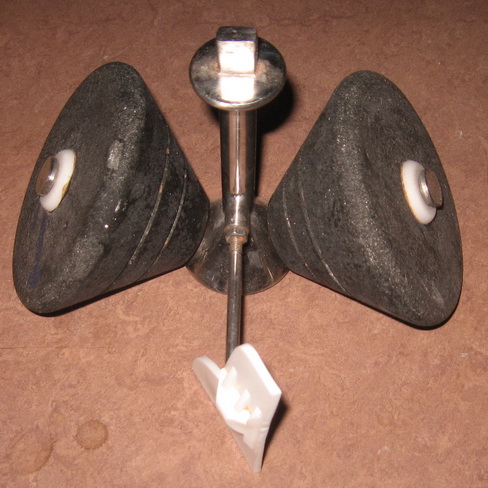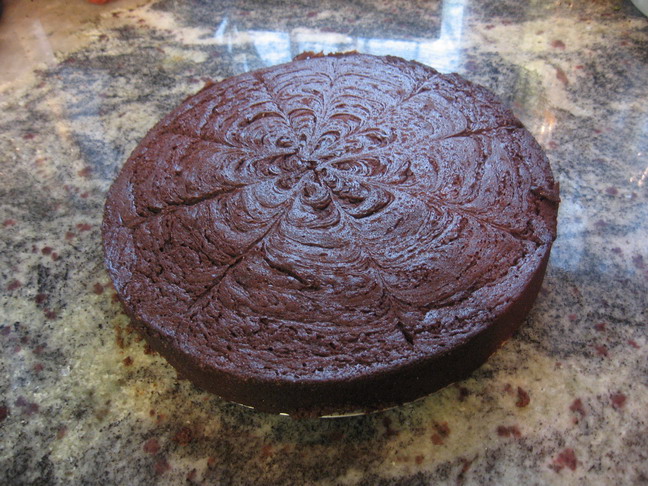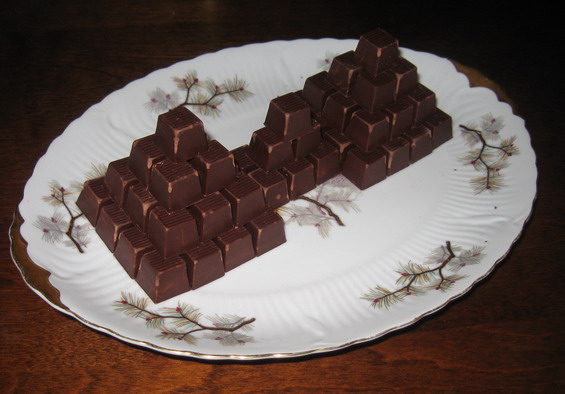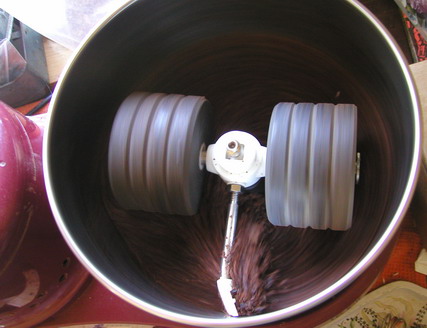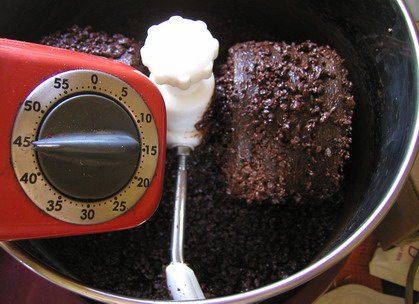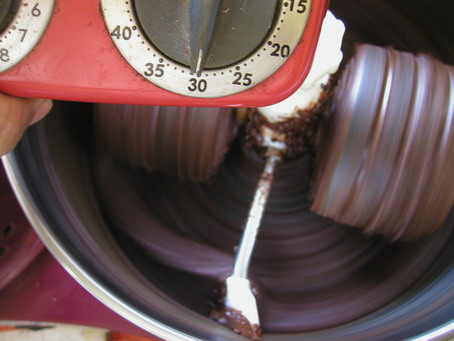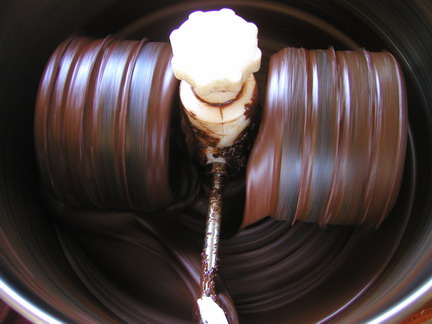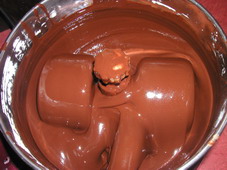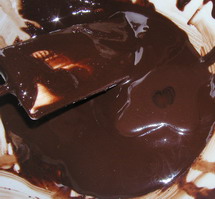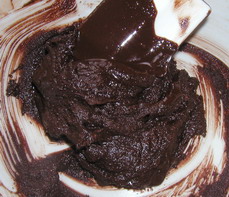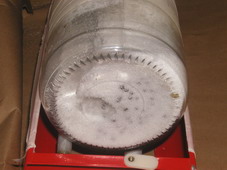i want to buy the new spectra 11 grinder, but i want to do some dry grinding with it. (throw in some sugar and after that some cocoa nibs and refine them). after that is done, i want to add the rest of the ingredients; cocoa butter and milk powder.(because i want to make milk chocolate), than i would like to conch it for 12-14 hours.can the grinder do that?
No. At least to that first part. The Spectra 11, and all other like style models (granite rollers rotating on a granite base) are based off the Indian Wet Grinder. That right there answers the question. It is for wet ingredients. To work, it needs a fluid to work with, be it water for rices and dals or oil for nut butter or cocoa butter for chocolate. If you use it dry it just packs down once it hits a certain micron size…and it’s pretty coarse.
That said, you can still do what you are asking. Sort of. But I want to comment on some of your assumptions, language and process.
You want to add ‘some’ sugar and ‘some’ cocoa nibs. At first I would say this is fine as long as you keep the ratio such that it isn’t dry grinding (since the Melanger can’t do it), but instead the total fat content is above 35%. But you don’t mention adding the ‘rest ‘ of the of the sugar and nibs. Only the rest of the other ingredients. In that for most milk chocolates, you don’t add over 20% cocoa nibs (and that would be HIGH) and don’t add less than 30% sugar, that right there precludes having this work since it will indeed be dry (as you asked about).
But, let’s assume that somehow you were able to do this and magically you have refined your cocoa nibs and sugar and now you are adding your cocoa butter and milk powder. What have you REALLY gained? To my mind nothing. You still have to refine your milk powder. You are NOT conching. You are refining still because the particle size of the milk powder is such that it’s still way too large to feel smooth on your tongue.
This leads me to definitions.
First off. It is a Spectra 11 Melanger. It is not a Spectra 11 Conch(e) or Refiner. Those imply they do one or the other, and the key is that it is both.
People seem to toss Refine and Conch around interchangeably and incorrectly. While in many ways, we still do not 100% know what conching is. There is theory that it is enrobing particles of sugar and cocoa solid in cocoa butter on some special molecular bonding level and that is what gives ‘conched’ chocolate its smooth mouth feel. The other theory is that it is more of a chemical process that drives off or neutralizes harsher and sharper tastes in the chocolate and our resulting perception is a ‘smoother’ chocolate. In either case, what is not happening is particles are not getting smaller. And that is a good working definition.
If you are reducing the particle size of anything you are Refining (and may be conching).
If you are NOT reducing the partible size of anything, you are Conching only.
And my personal take is if you are reducing particle size in a melanger (as opposed to a roll refiner) then you are also conching and in that case you are melanging…refining and conching together….but you are not ‘conching’ because that implies you are not refining.
I make such a big point of this because in the question above the implication is that the milk powder is small enough that only ‘conching’ is needed for 12-24 hours and that just isn’t the case. You have to continue to refine or if you prefer, mélange (because it too has flavors to drive off or convert).
And I make this point because I have helped trouble shoot more than one person who came to me because of exactly this misunderstanding. “I added milk powder, took all the pressure off the granite wheels, and conched for 72 hours, but my chocolate is gritty. What did I do wrong?”. And the answer is that they assumed conching reduces particle size because it makes ‘smooth’ chocolate. And it doesn’t. Only refining does that. And if they had truly understood that, they would not have removed the pressure on the wheels and kept refining, and not moved on to ‘conching’. Another l point I would like to make, which you can consider a segue for next week’s Ask the Alchemist, is that it is nearly impossible to over refine in a Melanger. The practical point to that is I never remove the pressure off the granite wheels and let the Melanger take the chocolate naturally from Melanging to conching.
So to finish up, you could refine your cocoa nibs, sugar (and in a practical point) some cocoa butter until smooth, then add your milk powder, but you still need to refine again, and it will probably be 18-36 hours, not 12-24. I’m not personally sure why you would want to do this, but you could…but to my mind the only thing you have done here is extend your refining time when most people want to reduce it.



